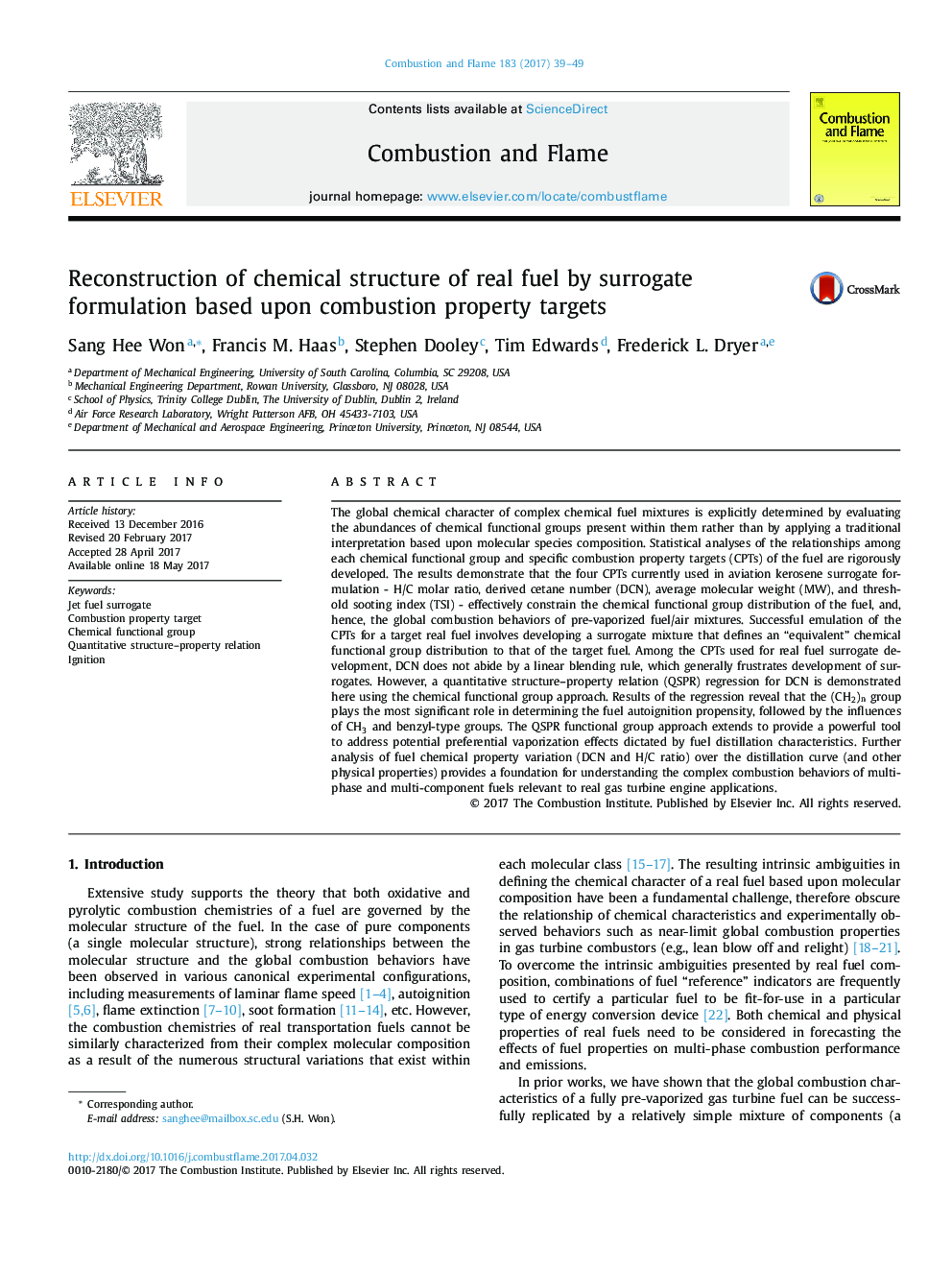| کد مقاله | کد نشریه | سال انتشار | مقاله انگلیسی | نسخه تمام متن |
|---|---|---|---|---|
| 6468108 | 1423554 | 2017 | 11 صفحه PDF | دانلود رایگان |
The global chemical character of complex chemical fuel mixtures is explicitly determined by evaluating the abundances of chemical functional groups present within them rather than by applying a traditional interpretation based upon molecular species composition. Statistical analyses of the relationships among each chemical functional group and specific combustion property targets (CPTs) of the fuel are rigorously developed. The results demonstrate that the four CPTs currently used in aviation kerosene surrogate formulation - H/C molar ratio, derived cetane number (DCN), average molecular weight (MW), and threshold sooting index (TSI) - effectively constrain the chemical functional group distribution of the fuel, and, hence, the global combustion behaviors of pre-vaporized fuel/air mixtures. Successful emulation of the CPTs for a target real fuel involves developing a surrogate mixture that defines an “equivalent” chemical functional group distribution to that of the target fuel. Among the CPTs used for real fuel surrogate development, DCN does not abide by a linear blending rule, which generally frustrates development of surrogates. However, a quantitative structure-property relation (QSPR) regression for DCN is demonstrated here using the chemical functional group approach. Results of the regression reveal that the (CH2)n group plays the most significant role in determining the fuel autoignition propensity, followed by the influences of CH3 and benzyl-type groups. The QSPR functional group approach extends to provide a powerful tool to address potential preferential vaporization effects dictated by fuel distillation characteristics. Further analysis of fuel chemical property variation (DCN and H/C ratio) over the distillation curve (and other physical properties) provides a foundation for understanding the complex combustion behaviors of multi-phase and multi-component fuels relevant to real gas turbine engine applications.
Journal: Combustion and Flame - Volume 183, September 2017, Pages 39-49
